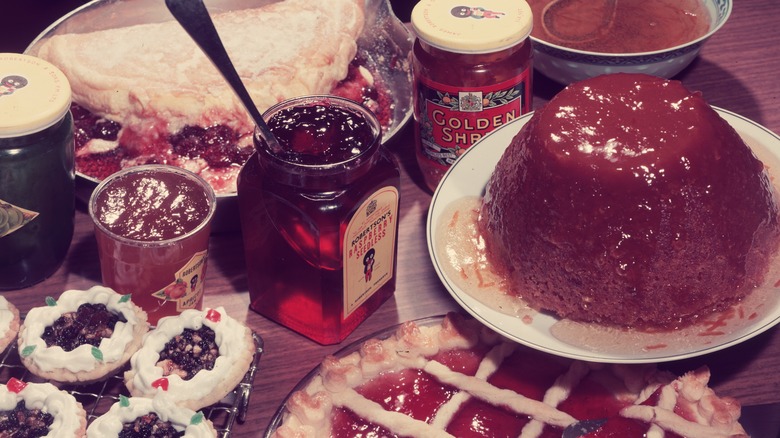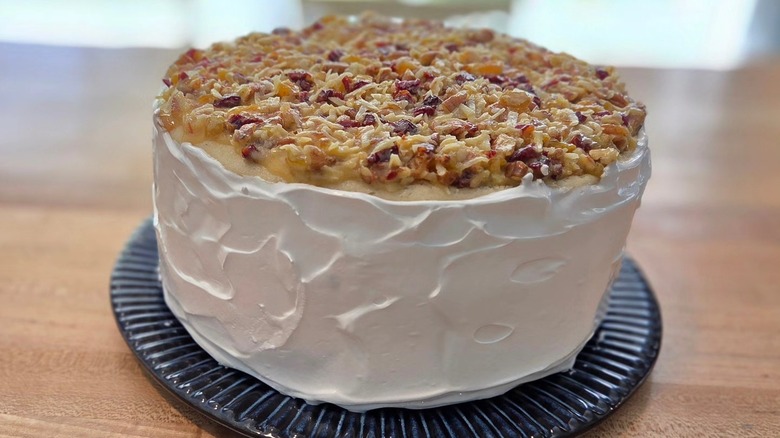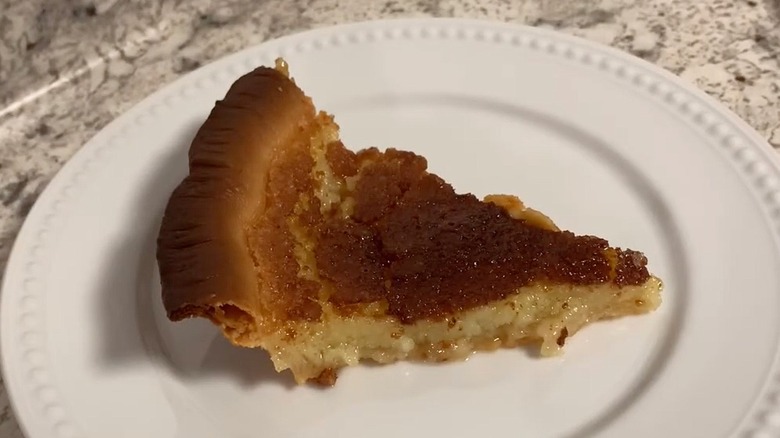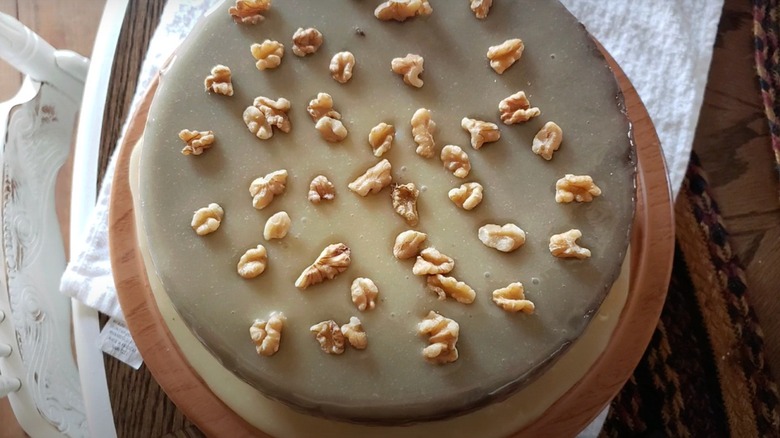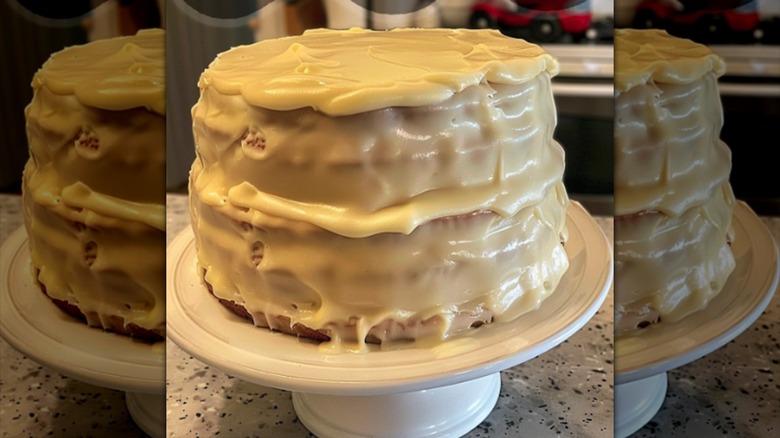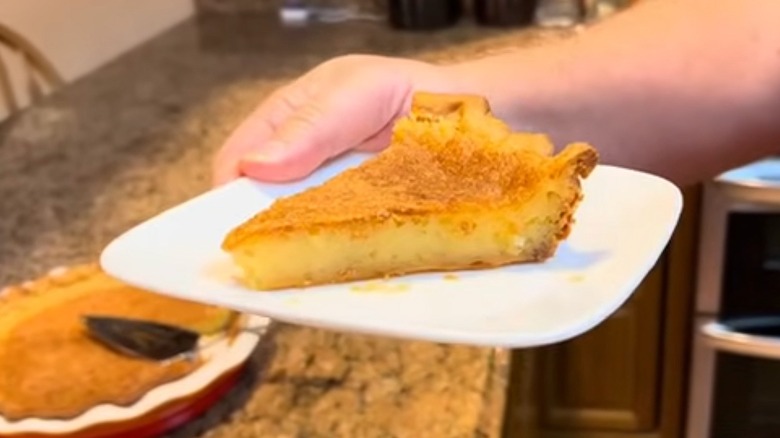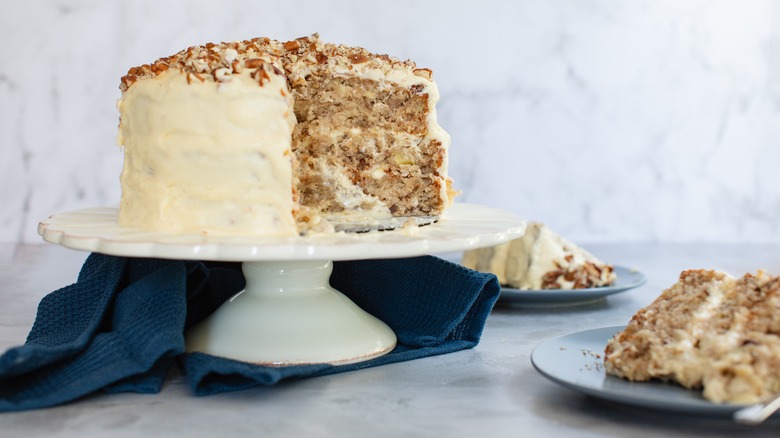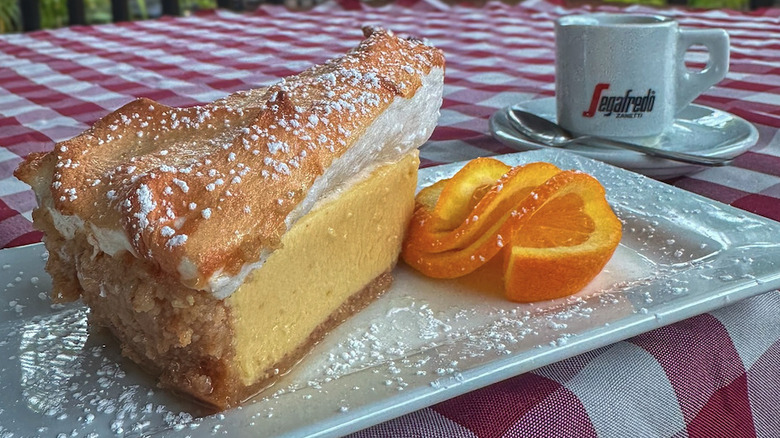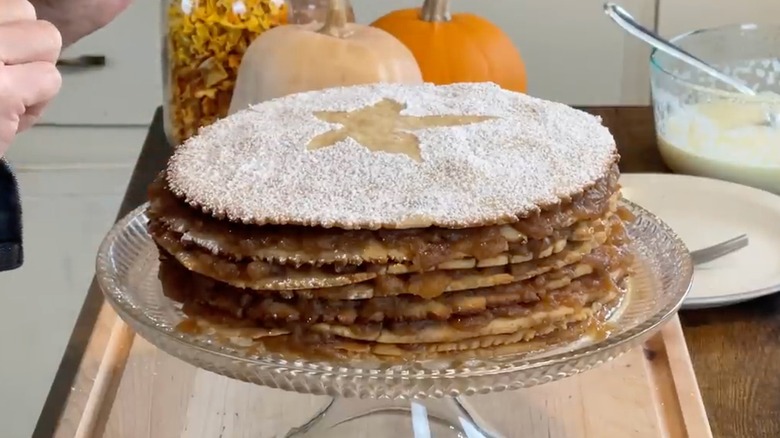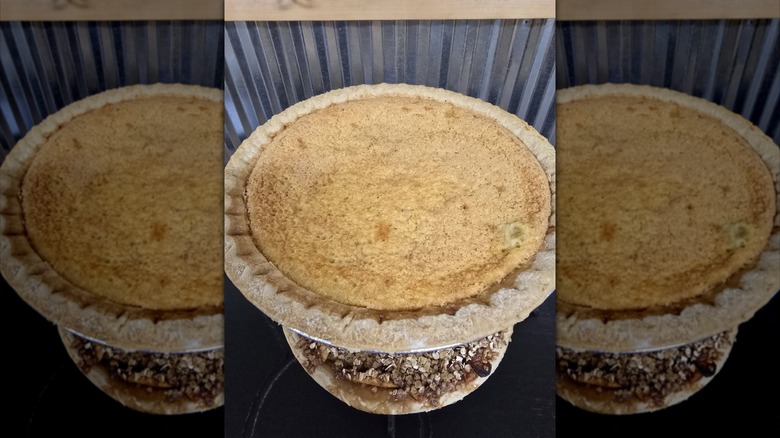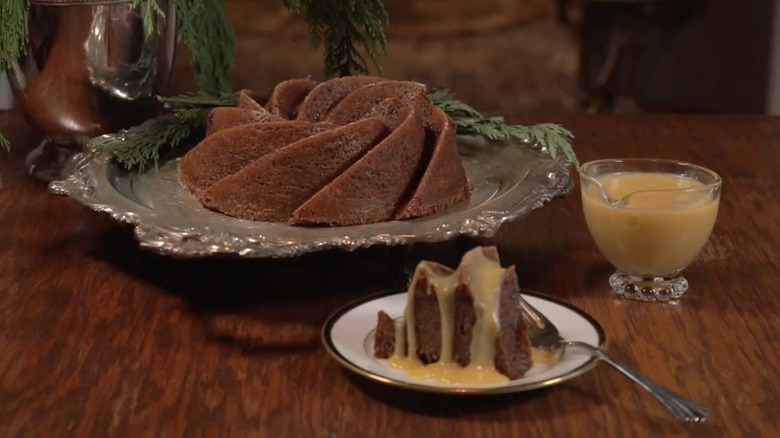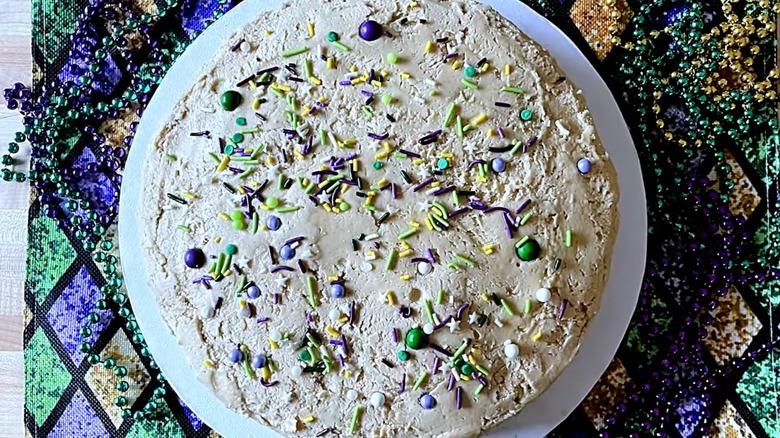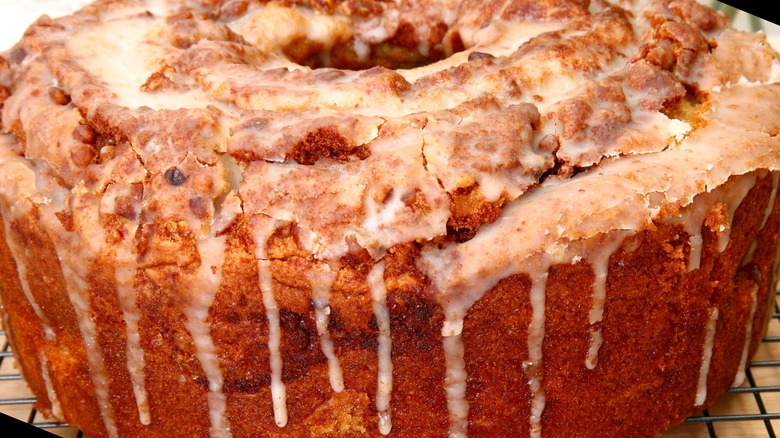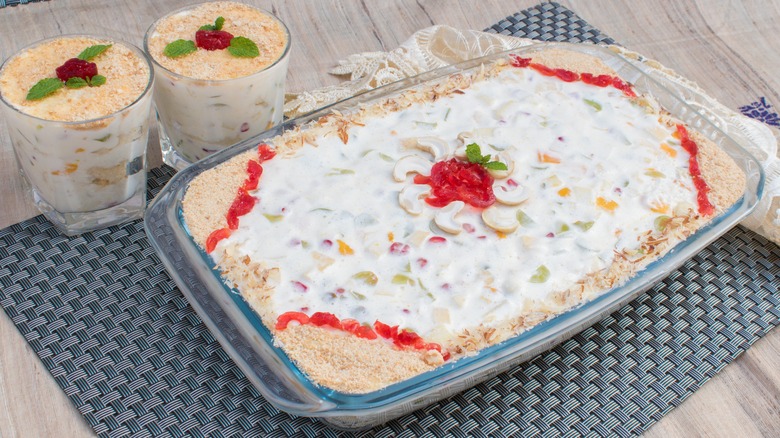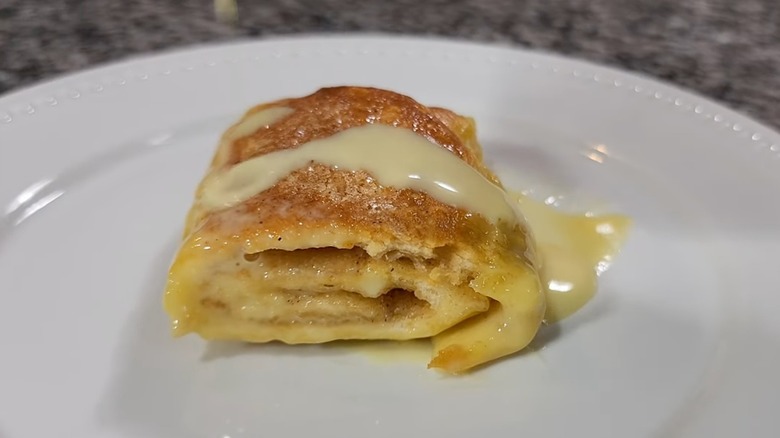16 Retro Southern Desserts That Deserve A Second Chance
Regardless of what is happening in the world or how bad a day you have, dessert can help to make you feel better. A slice of pie, piece of cake, or scoop of pudding is the ultimate sign of hospitality that few do better than those residing in the Southern region of the United States.
Indeed, every state in the country has an iconic dessert, but the South seems to have a legacy of recipes that have been passed down for generations that evoke nostalgia in even the staunchest health food fan. Many of these are still satisfying sweet tooths here and there, while others have sadly been forgotten.
We did a deep dive into the history of Southern desserts to dig up some that may have escaped our memories. From delicacies firmly rooted in historical events to those that emerged as a way of creating something out of nothing during hard times, read on to discover the retro Southern desserts that, in our estimation, deserve a second chance.
Lane Cake
The lane cake is a booze-filled dessert that in 2016 was dubbed the official state dessert by Alabama. This layered masterpiece was the invention of one Emma Rylander Lane from Clayton, Alabama, who created it for a baking competition that she won in 1898.
Sometimes called "Prize Cake," an homage to this prize-winning turn, the cake features so much bourbon or brandy that Harper Lee famously mentions it in her 1960 chef d'oeuvre "To Kill a Mockingbird." The character of Scout notes "Miss Maudie Atkinson baked a Lane cake so loaded with shinny it made me tight," with the word "tight" in this case meaning tipsy.
What sets this cake apart, besides the copious quantities of alcohol it contains, is its reliance on baking powder, which was invented in the 1850s and revolutionized the art of cake making. The remaining ingredients of this historical four-layer cake include raisins, butter, sugar, vanilla, eggs, and, occasionally, coconut or pecans. While you may find it in celebratory settings, the amount of alcohol makes this cake less well-suited to most modern-day tastes.
Jefferson Davis Pie
Among the more unique pies you'll only find in the United States is a recipe that appears to have fallen out of favor: Jefferson Davis Pie. This pie consists of a luxurious, spiced custard that is punctuated by chopped dates, raisins, and pecan pieces. These are occasionally coated with a delicate meringue. While some recipes have re-imagined this pie with the dried fruit and nuts added into the crust, the classic version is a mouthfeel that is typically less popular, owing to its resemblance to fruitcake.
Though the precise origins of this recipe remain a mystery, what is clear is that its name has nothing to do with the first and only president of the Confederacy, Jefferson Davis. It was likely the legacy of Africans enslaved during the Civil War. According to some accounts, the recipe is attributed to a slave woman from Missouri. It was so well-received that fame for its brilliance quickly spread across the South, where it presumably was given its unfortunate moniker.
Jam Cake
Like many American cakes, jam cake is an example of the impact immigration has had on our nation. Though generally attributed to Kentucky, this cake was actually brought to the Bluegrass State by German migrants who made their way from Pennsylvania to the Deep South and beyond during the mid-1800s. This cake used to be the staple of the holidays, particularly Christmas, when they would be served alongside other, more recognizable favorites, like pumpkin or pecan pie. While the latter have endured, jam cake is seldom seen anymore.
Jam cake takes advantage of local berries, generally blackberries or blueberries, that are turned into homemade preserves. The seedless preserves act to help give the cake flavor, moisture, and sweetness. This highly spiced cake is often augmented with raisins and toasted, chopped walnuts for texture. It historically features a caramel icing that is delicately drizzled over the top to help balance out the sweetness.
Lemon Cheese Layer Cake
Among the once-popular American cakes that need a comeback is the lemon cheese layer cake. This 10-layer masterpiece, which was a fixture in states all across the Southern United States during the late 1800s and early 1900s, represents something of an etymological conundrum. While it does have lemon in it, in the form of lemon curd that is generously spread between the cake layers, it's completely void of cheese in any iteration.
The explanation for this has to do with the likely origins of the recipe, which point to England. In the late 1800s, lemon curd was made by combining lemon zest and juice with cream and allowing these to curdle, much the way acid is used to produce cheese curds. This resulted in the mixture being dubbed "lemon cheese." Today, lemon curd is generally made from lemon juice and zest cooked together with sugar, eggs, and butter until thick and creamy.
Transparent Pie
Unique to a small pocket of the Northern Kentucky River Region, namely the town of Maysville, transparent pie is a delicacy that has won the hearts of Kentuckians since its invention in the late 1800s. One such Kentuckian is the famous actor George Clooney, who was born and raised there. In an interview at the premiere of the movie "Leatherheads," the actor stated that it was his favorite thing about coming home, and he isn't alone. One small bakery known as Magee's still makes the pie during the holiday season, but it is largely unknown outside of the region.
Similar to New England chess pies and Southern buttermilk pies, transparent pie gets its name from the clear, custard-like filling that is dumped into a pie shell and baked. Unlike other fancier pies that have remained popular during the holidays, like pecan or pumpkin, it is made from run-of-the-mill ingredients that any rural household would have had on hand, including cream, eggs, and flour.
Hummingbird Cake
Though the classic hummingbird cake may be a relic of Southern cooking, Americans can thank the Jamaica tourist board for this delectable recipe. The distribution of this cake recipe was something of a marketing ploy by the national tourism board of Jamaica to promote a certain favorable image of the country stateside. Also known as doctor bird cake, the alternative name for the national bird of Jamaica, the swallowtail hummingbird, this cake first appeared as a recipe in a 1978 issue of Southern Living Magazine. It has since become its most requested recipe.
This sugary cake features two quintessentially tropical ingredients, pineapples and bananas. These are baked into a spice-laden sponge-like cake that is adorned with a cream cheese frosting and garnished with toasted pecans. The finished cake is something akin to a typical carrot cake recipe that has been mashed together with a basic banana bread, though perhaps slightly spicier.
Sour Orange Pie
Move over key lime, sour orange pie used to be Florida's thing before this dessert took over the state. A remnant of 16th century Spanish settlers, Seville orange trees were a botanical transplant that proliferated across Florida. The fruit of this tree has a distinctive, tart flavor that is unlike the modern-day, hybridized iteration of this citrus varietal and more similar to lemons, hence this recipe's inevitable mutation into the more prevalent key lime pie.
It was frequently transformed into a single crust pie that was thickened with cornstarch, rather than sweetened condensed milk, which wasn't invented until the mid-1800s. The crust, which was more likely made from a saltine-like cracker than a graham one, was filled by this custard and baked until firm. The result was a pie that had a vibrant, distinctive flavor that cannot be matched. Most recipes today combine conventional orange juice with lemon juice to obtain an acidity and bitterness that is reminiscent of Seville oranges in their absence.
Apple Stack Cake
To the uninitiated eye, an apple stack cake may very well resemble a stack of pancakes piled high and spread with dense layers of apple compote. While this isn't altogether inaccurate, it is also very simplistic. At its heart, apple stack cake is formed from layers of cake made with flour, eggs, and buttermilk, sweetened with the unique flavor of sorghum molasses. These are alternated with a paste or sauce made from chopped apples cooked together with sugar or molasses, spices, and water until thick and gooey.
The entertaining folk tale behind this cake is that it became a staple at weddings because every guest would bring a layer of cake to the festivities, which would subsequently be stacked on top of each other until a towering masterpiece was created. The more layers, the more well-liked.
Though this Appalachian delicacy has a wholesome origin story, it is rooted in the history of migration from the early colonies westward. The actual recipe is attributed to the founder of Harrodsburg, Kentucky, one James Harrod, who came there in 1774 from Pennsylvania. Because this cake was made with ingredients that were readily obtained by any Appalachian household, it became wildly popular.
Lady Baltimore Cake
While a Lady Baltimore cake appears to be something that you'd discover at a bakery in Maryland, this dessert actually has its roots in Charleston, South Carolina. It gets its name from a combination of reality and fantasy. Though immortalized in a famed book by the same name, which was authored by Owen Wister in 1906, the cake was likely a fixture of the Lady Baltimore Tea Room, where owners Florence and Nina Ottelengui developed the recipe as a variation on the popular queen cake. Wister likely enjoyed the cake while dining there and included it in his iconic novel.
What sets this cake apart from others is its complex texture. It features a sponge-like cake that is dotted with dried fruits and nuts, generally raisins steeped in rum and toasted, chopped walnuts. The whole cake is bathed in a meringue-based frosting, giving it a beautiful, glossy, white finish that makes it ideal for weddings, Christmas, or any celebratory meal.
Vinegar Pie
One pie that appears as shrouded in mystery as it is abundant with acidity is vinegar pie. This recipe is often lumped together with other desserts developed during the Great Depression, known as "desperation pies." These sweet treats, which include recipes like transparent pie, buttermilk pie, and chess pie, were thought to have emerged out of necessity, using only ingredients readily available and affordable during difficult times.
In reality, vinegar pie is a concept that goes back even farther. The first mention of this recipe is in a book called "Practical Housekeeper," written by Marion Scott in 1855. It subsequently appears in numerous books written by authors across the United States. While many regions lay claim to the recipe, it is definitely considered a relic of Southern hospitality that deserves inclusion here.
The recipe for vinegar pie is quite simple. It features a custard filling made from eggs, sugar, butter, and, of course, vinegar, which are baked into a single crust pie. While historically any kind of vinegar would be used, apple cider vinegar is the most popular variety owing to its more delicate, fruity flavor.
Woodford Pudding
While some of us may think of JELL-O when pudding comes to mind, a Woodford pudding recipe is more in line with the British definition of the word, which is a custard-like dessert that is baked, steamed, or boiled. A classic Woodford pudding is made from butter, sugar, eggs, flour, spices, buttermilk, and, the defining ingredient, blackberry jam. These are combined together and baked until light and fluffy. The whole concoction is garnished with a rich, almost syrup-like butterscotch sauce that is a deep brown hue.
Occasionally featured at Kentucky Derby festivities, this historical recipe was first mentioned in a publication dating back to 1875. It gets its name from Woodford County, an area near Lexington, Kentucky, which is incidentally the home to the famed Woodford Reserve bourbon distillery. Though there is no bourbon in this recipe, its fruity, caramel-like sweetness and almost chocolatey appearance certainly makes it an ideal pairing with this libation.
Gâteau de Sirop or Syrup Cake
When one considers Louisiana and Cajun cuisine in particular, popular dishes like gumbo, jambalaya, and étouffée may come to mind. One recipe that emerged from this culture that hasn't withstood the test of time nearly as effectively is gâteau de sirop or syrup cake. This dessert is a relic of the Antebellum period in the South, which existed from the end of the War of 1812 to the start of the Civil War. During this period, Louisiana became the focus of sugar cane production in the United States. This sugar was frequently used in syrup form for baking, producing moist, dense, molasses-like desserts that characterized the tastes of the era and capitalized on a readily available commodity.
Gâteau de sirop or syrup cake fuses flour, eggs, oil, and warm spices typically associated with pumpkin or apple pie, like cinnamon, ginger, and cloves, with real cane syrup in its liquid form. These are baked until golden and served with fresh whipped cream.
Sock It To Me Cake
The origin story of this classic Southern dessert from the 1970s is something of an oddity. The sock it to me cake was inspired by the pop culture sensation that was Rowan & Martin's Laugh-In. This sketch comedy show that began in 1968 featured celebrity guests in short bits that were often punctuated by catchphrases. One such catchphrase was, you guessed it, "sock it to me." This was exclaimed every time something surprising occurred on the show. At one point in the early 1970s, Duncan Hines sponsored the show and began featuring a recipe for a cake by this name on boxes of its iconic yellow cake mix.
The base of this half pound cake, half coffee cake mash-up that is baked in a bundt pan is the boxed yellow cake. It is interlaced with a delicious strain of brown sugar and toasted pecans that slowly meld together with the batter as the cake bakes, producing a surprise sweet vein in the center of each slice of cake. This cake is typically garnished with a simple white icing.
Tipsy Parson
Sometimes known as a Tipsy Squire or Tipsy Pudding, the Tipsy Parson is just another name for a classic British-style trifle. These desserts came to the South by way of English settlers, who landed there in the mid-1700s. The name refers to the often boozy components that are used to resuscitate stale cake. Consummate hosts, Southerners would often bust out their favorite trifle stands and load them up to serve to guests after Sunday church services, during which the preacher would occasionally leave a little tipsy.
Though not specific, a classic Tipsy Parson recipe often includes day-old pound or angel food cake, pudding or custard, fresh fruit, syrup or jam, and, of course, the alcohol, which in the South would typically be bourbon or whiskey. These are layered until the trifle dish is filled and then allowed to set for up to 24 hours. Trifles were as valued by Southerners for their elegance as they were for their efficiency, as they didn't require any baking and could be assembled ahead of time.
Mock Apple Pie
Mock apple pie, or cracker pie as it was occasionally known, likely did not originate in the South, but was popularized there. It is mentioned in a number of Southern cookbooks, including the 1863 oeuvre the "Confederate Receipt Book" and "What Mrs. Fisher Knows About Old Southern Cooking," which was published in 1881. It re-emerged in popularity in the 1930s, when a variation of this recipe was printed on a box of Ritz Crackers and remained a fixture there until the mid-1980s.
Though purportedly born out of the desperation of the Civil War and later rekindled out of the necessity of the Great Depression, this pie likely originated as a means of producing something akin to an apple pie when apples were either unavailable or not in season. This pie has a classic, flaky double pie crust. The filling is made from either Ritz or saltine crackers combined with water, sugar, lemon zest, cinnamon, and butter. These are carefully cooked together until they develop a consistency that is surprisingly similar to that of chopped apples.
Butter Roll
The origin of the butter roll is something of a mystery, but its importance to the families residing along the Mississippi Delta is undeniable. This classic Southern dessert, which is quickly becoming something of an endangered recipe, was likely born out of necessity. It took advantage of the scraps of leftover biscuit dough that were generously sprinkled with sugar and spices, rolled up, and drowned in a custard-like sauce. These were baked until golden brown and served hot.
While they may appear to be something of a precursor to a modern-day cinnamon roll, this dish doesn't feature a yeast-proofed pastry and its precise presentation can vary from solid logs to individually-shaped rolls. What is certain is that this is a dish that many recall fondly as something they were served by their grandmother growing up. It is evidence of the deliciousness that can be created with some ingenuity despite a lack of exotic ingredients.
